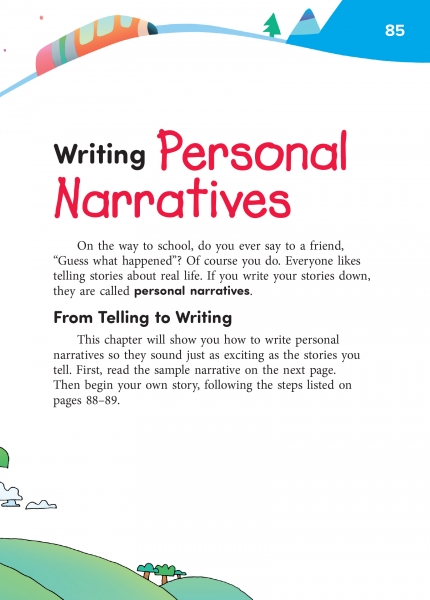A Closer Look at Narratives
Ask your students to close their eyes and listen closely. After a few moments, ask them to tell you what they can hear (raising their hands). Call on students one by one to tell about the sounds.
Have them keep their eyes closed and tell what they feel—with their fingers, with the soles of their feet, with their breathing. . . . Take more suggestions.
Then have them open their eyes and tell the most interesting thing they see.
Help students understand that we know things because of our five major senses: what we see, hear, smell, taste, and touch. If we include those kinds of sensory details in our narratives, readers will be able to see, hear, smell, taste, and touch the experience themselves. They will feel like they are living the experience!
Lead your students through the three main points on this page.
Explain also how specific verbs show readers what is happening rather than just telling them. And dialogue lets them hear the people in the narrative speak, as if they were in the same room.
Encourage students to use these kinds of details when they write their own narratives.


